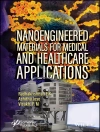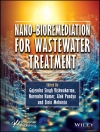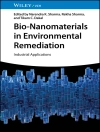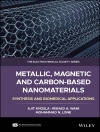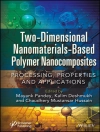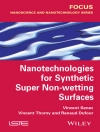Edited by key figures in 3D integration and written by top authors from high-tech companies and renowned research institutions, this book covers the intricate details of 3D process technology. As such, the main focus is on silicon via formation, bonding and debonding, thinning, via reveal and backside processing, both from a technological and a materials science perspective. The last part of the book is concerned with assessing and enhancing the reliability of the 3D integrated devices, which is a prerequisite for the large-scale implementation of this emerging technology.
Invaluable reading for materials scientists, semiconductor physicists, and those working in the semiconductor industry, as well as IT and electrical engineers.
Inhaltsverzeichnis
List of Contributors xvii
1 3D IC Integration Since 2008 1
Philip Garrou, Peter Ramm, and Mitsumasa Koyanagi
1.1 3D IC Nomenclature 1
1.2 Process Standardization 2
1.3 The Introduction of Interposers (2.5D) 4
1.4 The Foundries 6
1.4.1 TSMC 6
1.4.2 UMC 7
1.4.3 Global Foundries 7
1.5 Memory 7
1.5.1 Samsung 7
1.5.2 Micron 8
1.5.3 Hynix 9
1.6 The Assembly and Test Houses 9
1.7 3D IC Application Roadmaps 10
References 11
2 Key Applications and Market Trends for 3D Integration and Interposer Technologies 13
Rozalia Beica, Jean-Christophe Eloy, and Peter Ramm
2.1 Introduction 13
2.2 Advanced Packaging Importance in the Semiconductor Industry is Growing 16
2.3 3D Integration-Focused Activities – The Global IP Landscape 18
2.4 Applications, Technology, and Market Trends 22
References 32
3 Economic Drivers and Impediments for 2.5D/3D Integration 33
Philip Garrou
3.1 3D Performance Advantages 33
3.2 The Economics of Scaling 33
3.3 The Cost of Future Scaling 34
3.4 Cost Remains the Impediment to 2.5D and 3D Product Introduction 37
3.4.1 Required Economics for Interposer Use in Mobile Products 38
3.4.2 Silicon Interposer Pricing 38
References 40
4 Interposer Technology 41
Venky Sundaram and Rao R. Tummala
4.1 Definition of 2.5D Interposers 41
4.2 Interposer Drivers and Need 42
4.3 Comparison of Interposer Materials 44
4.4 Silicon Interposers with TSV 45
4.5 Lower Cost Interposers 48
4.5.1 Glass Interposers 48
4.5.1.1 Challenges in Glass Interposers 49
4.5.1.2 Small-Pitch Through-Package Via Hole Formation and Ultrathin Glass Handling 49
4.5.1.3 Metallization of Glass TPV 51
4.5.1.4 Reliability of Copper TPVs in Glass Interposers 52
4.5.1.5 Thermal Dissipation of Glass 53
4.5.1.6 Glass Interposer Fabrication with TPV and RDL 53
4.5.2 Low-CTE Organic Interposers 53
4.5.3 Polycrystalline Silicon Interposer 55
4.5.3.1 Polycrystalline Silicon Interposer Fabrication Process 56
4.6 Interposer Technical and Manufacturing Challenges 57
4.7 Interposer Application Examples 58
4.8 Conclusions 60
References 61
5 TSV Formation Overview 65
Dean Malta
5.1 Introduction 65
5.2 TSV Process Approaches 67
5.2.1 TSV-Middle Approach 68
5.2.2 Backside TSV-Last Approach 68
5.2.3 Front-Side TSV-Last Approach 69
5.3 TSV Fabrication Steps 70
5.3.1 TSV Etching 70
5.3.2 TSV Insulation 71
5.3.3 TSV Metallization 71
5.3.4 Overburden Removal by CMP 72
5.3.5 TSV Anneal 73
5.3.6 Temporary Carrier Wafer Bonding and Debonding 74
5.3.7 Wafer Thinning and TSV Reveal 74
5.4 Yield and Reliability 75
References 76
6 TSV Unit Processes and Integration 79
Sesh Ramaswami
6.1 Introduction 79
6.2 TSV Process Overview 80
6.3 TSV Unit Processes 82
6.3.1 Etching 82
6.3.2 Insulator Deposition with CVD 83
6.3.3 Metal Liner/Barrier Deposition with PVD 84
6.3.4 Via Filling by ECD of Copper 84
6.3.5 CMP of Copper 85
6.3.6 Temporary Bonding between Carrier and Device Wafer 86
6.3.7 Wafer Backside Thinning 86
6.3.8 Backside RDL 87
6.3.9 Metrology, Inspection, and Defect Review 87
6.4 Integration and Co-optimization of Unit Processes in Via Formation Sequence 88
6.5 Co-optimization of Unit Processes in Backside Processing and Via-Reveal Flow 89
6.6 Integration and Co-optimization of Unit Processes in Via-Last Flow 91
6.7 Integration with Packaging 92
6.8 Electrical Characterization of TSVs 92
6.9 Conclusions 96
References 97
7 TSV Formation at ASET 99
Hiroaki Ikeda
7.1 Introduction 99
7.2 Via-Last TSV for Both D2D and W2W Processes in ASET 103
7.3 TSV Process for D2D 105
7.3.1 Front-Side Bump Forming 106
7.3.2 Attach WSS and Thinning 106
7.3.3 Deep Si Etching from the Backside 107
7.3.4 Liner Deposition 107
7.3.5 Removal of Si O 2 at the Bottom of Via 107
7.3.6 Barrier Metal and Seed Layer Deposition by PVD 110
7.3.7 Cu Electroplating 110
7.3.8 Cmp 110
7.3.9 Backside Bump 111
7.3.10 Detach WSS 111
7.3.11 Dicing 112
7.4 TSV Process for W2W 113
7.4.1 Polymer Layer Coat and Development 114
7.4.2 Barrier Metal and Seed Layer Deposition 114
7.4.3 Cu Plating 114
7.4.4 CMP 115
7.4.5 First W2W Stacking (Face to Face) 116
7.4.6 Wafer Thinning and Deep Si Etching 116
7.4.7 TSV Liner Deposition and Si O2 Etching of Via Bottom 117
7.4.8 Barrier Metal and Seed Layer Deposition and Cu Plating 117
7.4.9 CMP 117
7.4.10 Next W2W Stacking 118
7.5 Conclusions 119
References 119
8 Laser-Assisted Wafer Processing: New Perspectives in Through-Substrate Via Drilling and Redistribution Layer Deposition 121
Marc B. Hoppenbrouwers, Gerrit Oosterhuis, Guido Knippels, and Fred Roozeboom
8.1 Introduction 121
8.2 Laser Drilling of TSVs 121
8.2.1 Cost of Ownership Comparison 121
8.2.2 Requirements for an Industrial TSV Laser Driller 123
8.2.3 Drilling Strategy 124
8.2.3.1 Mechanical 124
8.2.3.2 Optical 125
8.2.4 Experimental Drilling Results 126
8.3 Direct-Write Deposition of Redistribution Layers 126
8.3.1 Introduction on Redistribution Layers 126
8.3.2 Direct-Write Characteristics 127
8.3.3 Direct-Write Laser-Induced Forward Transfer 128
8.3.4 LIFT Results 130
8.4 Conclusions and Outlook 131
References 132
9 Temporary Bonding Material Requirements 135
Rama Puligadda
9.1 Introduction 135
9.2 Technology Options 136
9.2.1 Tapes and Waxes 136
9.2.2 Chemical Debonding 136
9.2.3 Thermoplastic Bonding Material and Slide Debonding 136
9.2.4 Debonding Using Release Layers 137
9.3 Requirements of a Temporary Bonding Material 138
9.4 Considerations for Successful Processing 139
9.4.1 Application of the Temporary Bonding Adhesive to the Device Wafer and Bonding to Carrier 139
9.4.2 Moisture and Contaminants on Surface 139
9.4.3 Total Thickness Variation 140
9.4.4 Squeeze Out 140
9.5 Surviving the Backside Process 141
9.5.1 Edge Trimming 142
9.5.2 Edge Cleaning 142
9.5.3 Temperature Excursions in Plasma Processes 143
9.5.4 Wafer Warpage due to CTE Mismatch 143
9.6 Debonding 144
9.6.1 Debonding Parameters in Slide-Off Debonding 144
9.6.2 Mechanical Damage to Interconnects 144
References 145
10 Temporary Bonding and Debonding – An Update on Materials and Methods 147
Wilfried Bair
10.1 Introduction 147
10.2 Carrier Selection for Temporary Bonding 148
10.3 Selection of Temporary Bonding Adhesives 151
10.4 Bonding and Debonding Processes 152
10.5 Equipment and Process Integration 155
References 156
11 Zone BOND 1 : Recent Developments in Temporary Bonding and Room-Temperature Debonding 159
Thorsten Matthias, J€urgen Burggraf, Daniel Burgstaller, Markus Wimplinger, and Paul Lindner
11.1 Introduction 159
11.2 Thin Wafer Processing 159
11.2.1 Thin Wafer Total Thickness Variation 161
11.2.2 Wafer Alignment 163
11.3 Zone BOND Room-Temperature Debonding 163
11.4 Conclusions 165
References 166
12 Temporary Bonding and Debonding at TOK 167
Shoji Otaka
12.1 Introduction 167
12.2 Zero Newton Technology 168
12.2.1 The Wafer Bonder 168
12.2.2 The Wafer Debonder 170
12.2.3 The Wafer Bonder and Debonder Equipment Lineups 170
12.2.4 Adhesives 170
12.2.5 Integration Process Performance 172
12.3 Conclusions 174
References 174
13 The 3MTM Wafer Support System (WSS) 175
Blake Dronen and Richard Webb
13.1 Introduction 175
13.2 System Description 175
13.3 General Advantages 177
13.4 High-Temperature Material Solutions 178
13.5 Process Considerations 180
13.5.1 Wafer and Adhesive Delamination 180
13.5.2 LTHC Glass Delamination 181
13.6 Future Directions 181
13.6.1 Thermal Stability 181
13.6.2 Elimination of Adhesion Control Agents 182
13.6.3 Laser-Free Release Layer 183
13.7 Summary 183
Reference 184
14 Comparison of Temporary Bonding and Debonding Process Flows 185
Matthew Lueck
14.1 Introduction 185
14.2 Studies of Wafer Bonding and Thinning 186
14.3 Backside Processing 186
14.4 Debonding and Cleaning 188
References 189
15 Thinning, Via Reveal, and Backside Processing – Overview 191
Eric Beyne, Anne Jourdain, and Alain Phommahaxay
15.1 Introduction 191
15.2 Wafer Edge Trimming 192
15.3 Thin Wafer Support Systems 194
15.3.1 Glass Carrier Support System with Laser Debonding Approach 196
15.3.2 Thermoplastic Glue Thin Wafer Support System – Thermal Slide Debondable System 196
15.3.3 Room-Temperature, Peel-Debondable Thin Wafer Support Systems 197
15.4 Wafer Thinning 198
15.5 Thin Wafer Backside Processing 202
15.5.1 Via-Middle Thin Wafer Backside Processing: “Via-Reveal” Process 202
15.5.1.1 Mechanical Via Reveal 202
15.5.1.2 “Soft” Via Reveal 202
15.5.2 Via-Last Thin Wafer Backside Processing 203
References 205
16 Backside Thinning and Stress-Relief Techniques for Thin Silicon Wafers 207
Christof Landesberger, Christoph Paschke, Hans-Peter Sp€ohrle, and Karlheinz Bock
16.1 Introduction 207
16.2 Thin Semiconductor Devices 207
16.3 Wafer Thinning Techniques 208
16.3.1 Wafer Grinding 209
16.3.2 Wet-Chemical Spin Etching 210
16.3.3 CMP Polishing 211
16.3.4 Plasma Dry Etching 212
16.3.5 Dry Polish 213
16.3.6 Chemical–Mechanical Grinding (CMG) 214
16.4 Fracture Tests for Thin Silicon Wafers 214
16.5 Comparison of Stress-Relief Techniques for Wafer Backside Thinning 216
16.6 Process Flow for Wafer Thinning and Dicing 220
16.7 Summary and Outlook on 3D Integration 222
References 223
17 Via Reveal and Backside Processing 227
Mitsumasa Koyanagi and Tetsu Tanaka
17.1 Introduction 227
17.2 Via Reveal and Backside Processing in Via-Middle Process 227
17.3 Backside Processing in Back-Via Process 232
17.4 Backside Processing and Impurity Gettering 234
17.5 Backside Processing for RDL Formation 237
References 239
18 Dicing, Grinding, and Polishing (Kiru Kezuru and Migaku) 241
Akihito Kawai
18.1 Introduction 241
18.2 Grinding and Polishing 241
18.2.1 Grinding General 241
18.2.1.1 Grinding Method 241
18.2.1.2 Rough Grinding and Fine Grinding 242
18.2.1.3 The Grinder Polisher 243
18.2.2 Thinning 243
18.2.2.1 Stress Relief 245
18.2.2.2 Die Attach Film 246
18.2.2.3 All-in-One System 246
18.2.2.4 Dicing Before Grinding 246
18.2.3 Grinding Topics for 3DIC Such as TSV Devices 246
18.2.3.1 Wafer Support System 246
18.2.3.2 Edge Trimming 247
18.2.3.3 Grinding to Improve Flatness 248
18.2.3.4 Higher Level of Cleanliness 248
18.2.3.5 Via Reveal 249
18.2.3.6 Planarization 249
18.3 Dicing 250
18.3.1 Blade Dicing General 250
18.3.1.1 Dicing Method 250
18.3.1.2 Blade Dicing Point 250
18.3.1.3 Blade 251
18.3.1.4 Optimization of Process Control 252
18.3.1.5 Dicer 252
18.3.1.6 Dual Dicing Applications 252
18.3.2 Thin Wafer Dicing 253
18.3.3 Low-k Dicing 254
18.3.4 Other Laser Dicing 254
18.3.4.1 Ablation 254
18.3.4.2 Laser Full Cut Application 255
18.3.4.3 Stealth Dicing (SD) 256
18.3.5 Dicing Topics for 3D-IC Such as TSV 257
18.3.5.1 Cutting of Chip on Chip (Co C) and Chip on Wafer (Co W) 258
18.3.5.2 Singulation of Co W and Wafer on Wafer (Wo W) 259
18.4 Summary 260
Further Reading 260
19 Overview of Bonding and Assembly for 3D Integration 261
James J.-Q. Lu, Dingyou Zhang, and Peter Ramm
19.1 Introduction 261
19.2 Direct, Indirect, and Hybrid Bonding 262
19.3 Requirements for Bonding Process and Materials 263
19.4 Bonding Quality Characterization 267
19.5 Discussion of Specific Bonding and Assembly Technologies 269
19.6 Summary and Conclusions 273
References 274
20 Bonding and Assembly at TSMC 279
Douglas C.H. Yu
20.1 Introduction 279
20.2 Process Flow 280
20.3 Chip-on-Wafer Stacking 281
20.4 Co W-on-Substrate (Co Wo S) Stacking 283
20.5 Co Wo S Versus Co Co S 283
20.6 Testing and Known Good Stacks (KGS) 284
20.7 Future Perspectives 285
References 285
21 TSV Packaging Development at STATS Chip PAC 287
Rajendra D. Pendse
21.1 Introduction 287
21.2 Development of the 3DTSV Solution for Mobile Platforms 289
21.3 Alternative Approaches and Future Developments 293
References 294
22 Cu–Si O2 Hybrid Bonding 295
Léa Di Cioccio, S. Moreau, Loïc Sanchez, Floriane Baudin, Pierric Gueguen, Sebastien Mermoz, Yann Beilliard, and Rachid Taibi
22.1 Introduction 295
22.2 Blanket Cu–Si O2 Direct Bonding Principle 296
22.2.1 Chemical–Mechanical Polishing Parameters 296
22.3 Aligned Bonding 299
22.3.1 Wafer-to-Wafer Bonding 299
22.3.2 Die-to-Wafer Bonding in Pick-and-Place Equipment 299
22.3.3 Die-to-Wafer by the Self-Assembly Technique 300
22.4 Blanket Metal Direct Bonding Principle 302
22.5 Electrical Characterization 304
22.5.1 Wafer-to-Wafer and Die-to-Wafer Copper-Bonding Electrical Characterization 304
22.5.2 Reliability 307
22.5.3 Thermal Cycling 307
22.5.4 Stress Voiding (SIV) Test on 200 °C Postbonding Annealed Samples 308
22.5.5 Package-Level Electromigration Test 309
22.6 Conclusions 310
References 311
23 Bump Interconnect for 2.5D and 3D Integration 313
Alan Huffman
23.1 History 313
23.2 C4 Solder Bumps 315
23.3 Copper Pillar Bumps 316
23.4 Cu Bumps 319
23.5 Electromigration 320
References 322
24 Self-Assembly Based 3D and Heterointegration 325
Takafumi Fukushima and Jicheol Bea
24.1 Introduction 325
24.2 Self-Assembly Process 325
24.3 Key Parameters of Self-Assembly on Alignment Accuracies 327
24.4 How to Interconnect Self-Assembled Chips to Chips or Wafers 328
24.4.1 Flip-Chip-to-Wafer 3D Integration 329
24.4.2 Reconfigured-Wafer-to-Wafer 3D Integration 331
References 332
25 High-Accuracy Self-Alignment of Thin Silicon Dies on Plasma-Programmed Surfaces 335
Christof Landesberger, Mitsuru Hiroshima, Josef Weber, and Karlheinz Bock
25.1 Introduction 335
25.2 Principle of Fluidic Self-Alignment Process for Thin Dies 335
25.3 Plasma Programming of the Surface 336
25.4 Preparation of Materials for Self-Alignment Experiments 337
25.5 Self-Alignment Experiments 338
25.6 Results of Self-Alignment Experiments 339
25.7 Discussion 341
25.8 Conclusions 342
References 343
26 Challenges in 3D Fabrication 345
Douglas C.H. Yu
26.1 Introduction 345
26.2 High-Volume Manufacturing for 3D Integration 346
26.3 Technology Challenges 346
26.4 Front-Side and Backside Wafer Processes 346
26.5 Bonding and Underfills 350
26.6 Multitier Stacking 352
26.7 Wafer Thinning and Thin Die and Wafer Handling 353
26.8 Strata Packaging and Assembly 356
26.9 Yield Management 359
26.10 Reliability 360
26.11 Cost Management 362
26.12 Future Perspectives 362
References 364
27 Cu TSV Stress: Avoiding Cu Protrusion and Impact on Devices 365
Eric Beyne, Joke De Messemaeker, and Wei Guo
27.1 Introduction 365
27.2 Cu Stress in TSV 365
27.3 Mitigation of Cu Pumping 368
27.4 Impact of TSVs on FEOL Devices 371
References 378
28 Implications of Stress/Strain and Metal Contamination on Thinned Die 379
Kangwook Lee and Mariappan Murugesan
28.1 Introduction 379
28.2 Impacts of Cu Contamination on Device Reliabilities in Thinned 3DLSI 379
28.3 Impacts of Local Stress and Strain on Device Reliabilities in Thinned 3DLSI 386
28.3.1 Microbump-Induced Stresses in Stacked LSIs 387
28.3.2 Microbump-Induced TMS in LSI 388
28.3.3 Microbump-Induced LMS 389
References 391
29 Metrology Needs for 2.5D/3D Interconnects 393
Victor H. Vartanian, Richard A. Allen, Larry Smith, Klaus Hummler, Steve Olson, and Brian Sapp
29.1 Introduction: 2.5D and 3D Reference Flows 393
29.2 TSV Formation 394
29.2.1 TSV Etch Metrology 395
29.2.2 Liner, Barrier, and Seed Metrology 397
29.2.3 Copper Fill Metrology (TSV Voids) 399
29.2.4 Cross-Sectional SEM (Focused Ion Beam Milling Sample Preparation) 400
29.2.5 X-Ray Microscopy and CT Inspection 400
29.2.6 Stress Metrology in Cu and Si 402
29.3 MEOL Metrology 404
29.3.1 Edge Trim Inspection 405
29.3.2 Bond Voids and Bond Strength Metrology 406
29.3.2.1 Acoustic Microscopy: Operation 407
29.3.2.2 Acoustic Microscopy for Defect Inspection and Review 407
29.3.2.3 Other Bond Void Detection Techniques 408
29.3.3 Bond Strength Metrology 409
29.3.4 Bonded Wafer Thickness, Bow, and Warp 410
29.3.4.1 Chromatic White Light 411
29.3.4.2 Infrared Interferometry 412
29.3.4.3 White Light Interferometry (or Coherence Scanning Interferometry) 414
29.3.4.4 Laser Profiling 415
29.3.4.5 Capacitance Probes 416
29.3.4.6 Differential Backpressure Metrology 417
29.3.4.7 Acoustic Microscopy for Measuring Bonded Wafer Thickness 417
29.3.5 TSV Reveal Metrology 418
29.4 Assembly and Packaging Metrology 420
29.4.1 Wafer-Level C4 Bump and Microbump Metrology and Inspection 421
29.4.2 Package-Level Inspection: Scanning Acoustic Microscopy 422
29.4.3 Package-Level Inspection: X-Rays 424
29.5 Summary 426
References 427
Index 431
Über den Autor
Philip Garrou is a consultant and expert witness in the field of IC packaging materials and applications, prior to which he was Dir. of Technology and Business Dev. for Dow Chemicals‘ Electronic Materials business. Dr. Garrou is a Fellow of IEEE and IMAPS and served as President of the IEEE CPMT Society and IMAPS. He has co-authored 3 microelectronics texts and 100+ publications. He is Assoc. Ed. and author of the weekly blog ‚Insights from the Leading Edge‘ for Solid State Technology and has co-authored 3DIC reports for both Tech Search and Yole.
Mitsumasa Koyanagi is Professor in the Graduate School of Engineering at Tohoku University, Japan. After his Ph D in electrical engineering he joined the Central Research Laboratory of Hitachi where he was engaged in the research on semiconductor memories. After a three-year stay at the Xerox Palo Alto Research Center in California, USA, he became Professor in the Research Center for Integrated Systems at Hiroshima University, Japan. Mitsumasa Koyanagi received numerous awards, including the Solid-State Devices and Materials Award.
Peter Ramm is head of the department Heterogeneous System Integration of Fraunhofer EMFT in Munich, Germany, where he is responsible for the key competence ‚Si Processes, Device and 3D Integration‘. He received the physics and Dr. rer. nat. degrees from the University of Regensburg and subsequently worked for Siemens in the DRAM facility where he was responsible for the process integration. In 1988 he joined Fraunhofer IFT in Munich, focusing for more than 25 years on 3D integration technologies. Peter Ramm is co-author of over 100 publications and 24 patents and editor of Wiley’s ‚Handbook of Wafer Bonding‘. He received the ‚Ashman Award 2009‘ from IMAPS ‚For Pioneering Work on 3D IC Stacking and Integration‘.


